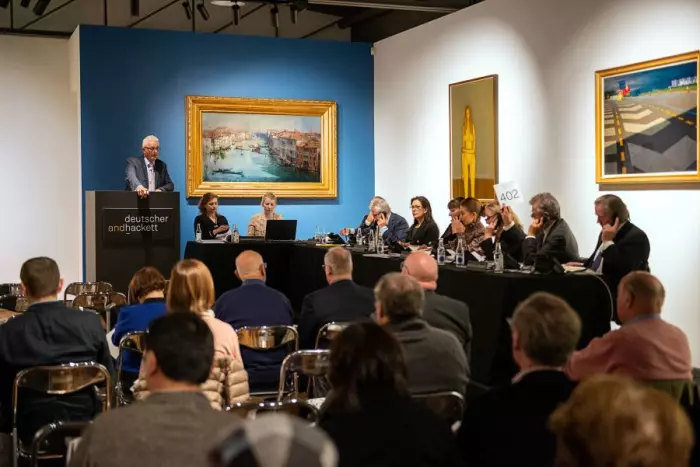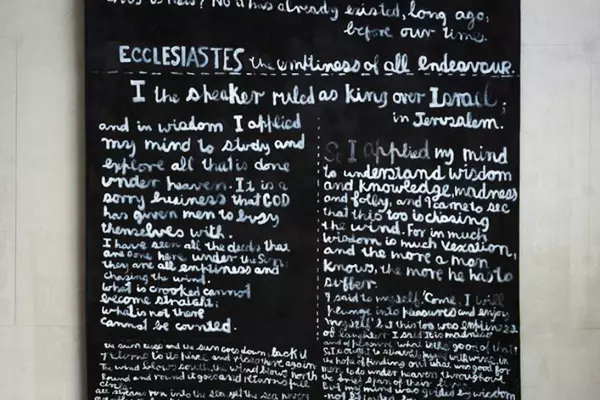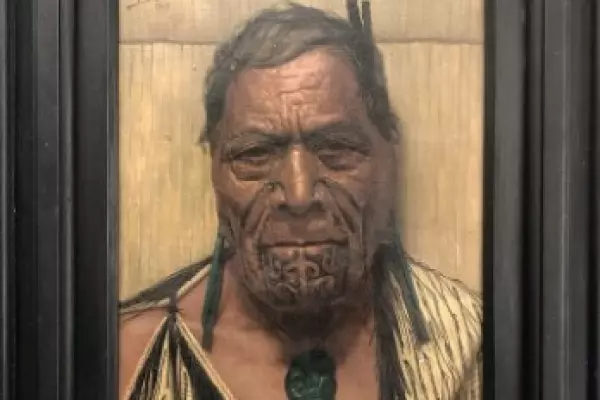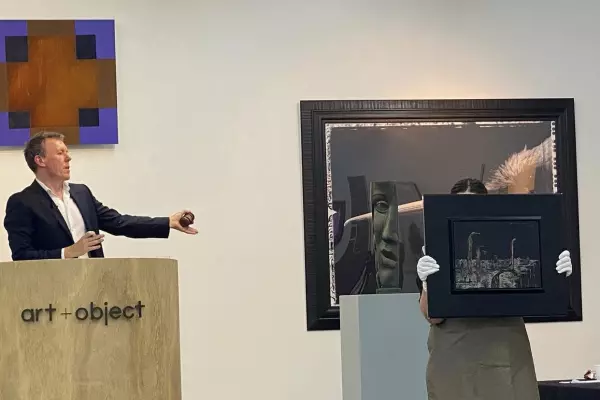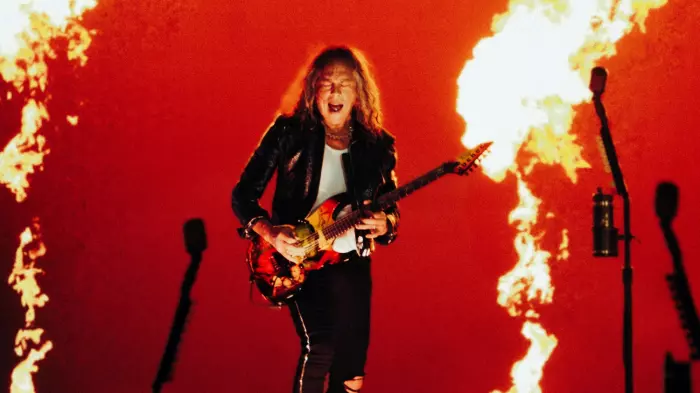Our closest neighbours in Australia have a varied and rich visual history which is somewhat mirrored by New Zealand’s own art history. Some of the first examples of non-indigenous art in both countries appeared courtesy of the artists travelling on Captain Cook’s voyages in the late 18th century. From Australia, topographical scenes and scientific drawings of previously unknown flora and fauna (such as kangaroos) were taken back to Europe and devoured by a public hungry to learn about the discoveries in the New World.
By the end of the 19th century, Australia’s population was 3.7 million, compared to New Zealand’s 800,000, and with more artists and more collectors over there, our art markets deviated, with Australia’s artists following the styles popular in Europe, such as impressionism and symbolism, whereas New Zealand’s continued in traditional landscape painting.
Aboriginal art now makes up a significant proportion of the art market in Australia. Although Australia’s is the oldest indigenous culture in the world, the dot paintings that the market is so familiar with started only in the early 1970s, when a teacher named Geoffrey Bardon encouraged the men of Papunya, a government settlement for native people 150 miles west of Alice Springs, to transfer their sand drawings onto canvas. The market grew exponentially, especially through the 1990s and 2000s when a huge amount of material of varying quality appeared in both the primary and secondary markets.
After a low patch, prices have started to pick up again and authenticated works (accompanied by verified documentation) by some of the best-known artists are selling well, although there is a big gap between interest in the likes of Clifford Possum Tjapaltjarri and Emily Kame Kngwarreye, whose major works have realised $2 million each, and the others who make up the market.
Annual turnover at auction in Australia ($120m last year) dwarfs New Zealand’s activity ($61m), although it’s worth noting that 2021 was a record year for both countries, with turnover far exceeding the average yearly totals. However, an average sale at a top-tier auction house in Sydney or Melbourne such as Smith & Singer or Deutscher and Hackett would usually realise between $5m and $10m compared to New Zealand’s $2m to $3m. This difference can be attributed to the depth and breadth of the Australian market and to a level of interest in artists and styles that we just don’t have in New Zealand, as well as a long history of arts patronage and scholarship.
Some of Australia’s blue-chip artists include Arthur Streeton and Frederick McCubbin, who were leading lights of the Heidelberg School, the birthplace of Australian impressionism. These artists captured the golden light and colour of the landscape and idealised the rural pioneer experience, and their best works can command prices into the millions of dollars.
Another area that has seen huge growth in recent years is the work of the modernist women artists based in Sydney from the 1930s to the 1960s. There have been big jumps in prices paid for the art of Grace Cossington Smith, Margaret Preston and women from the Grosvenor School of Modern Art such as Ethel Spowers and Eveline Syme, who produced futuristic linocut prints. This surge has been based on increased awareness and recognition of the artists’ abilities. Cossington Smith’s paintings of studio interiors painted with small square individual brushstrokes have been selling for $500,000-plus in the past two years. Just a few years ago, similar works would achieve $200,000. The Grosvenor School women have an international market for their works; their views of Tube stations, gusts of wind and children on swings – imagery that lends itself to a dynamic composition – sells just as well at Bonhams in London as at auction in Australia. Prices for some of the best examples of these prints in pristine condition have reached close to $100,000.
Australian painting from the 1960s and 1970s currently takes top billing and top prices in the auction catalogues. From its origins in the 19th century, the themes of the bush landscape and outback life have become some of the most recognisable iconography in Australian art history. Fred Williams was one of the first artists to paint the bush landscape outside of Melbourne in an abstract manner and his pared-back scenes from the late 1960s are some of the most desirable works at auction. In November 2020, a painting from this period sold for $2.3m, well over its $1.4m reserve, and a number of others have made well over $1m.
However, no work has captured the imagination of the Australian public quite like Sidney Nolan’s Ned Kelly series. Nolan painted two series of the story of the famous bushranger and cultural icon. The entire first series of 27 paintings have been in the National Gallery of Australia collection since 1977, but numerous prints and reproductions have ensured their widespread popularity. Therefore, when First-class Marksman, a work painted at the same time as the famous series, appeared at auction in 2010, there was huge interest from the market. Estimated to fetch $4.5m, the painting sold for $5.4m to the Art Gallery of New South Wales. Industry specialists in Australia believe that if it were offered in today’s market, it would make between $8m and $10m.
Another blue-chip artist, Brett Whiteley, whose work holds four of the top 10 places on the list of the highest prices paid at auction, has always been highly sought after by bidders and events in the past few years that could have been detrimental to his status have not changed that. (He was recognised in his own lifetime as a troubled artistic genius who was addicted to heroin.) His views of Sydney Harbour have long been top-shelf trophy paintings for collectors of note. Around 2010, three forgeries were created and sold for more than $3.6m as authentic Whiteley paintings in private sales rather than through auctions. The subsequent high-profile court case went on for years and exposed the depth and sophistication of the forgeries. An event like this could have cast doubt on the entire Whiteley market, but enthusiasm for the artist hasn’t waned and in 2020, his painting Henri’s Armchair sold for $5m.
As in New Zealand, the market in Australia has been on a bull run since early 2020, with huge prices achieved as a result of people who’ve been prevented by covid from holidaying overseas spending their money on art instead, and of buyers becoming more comfortable participating in the market online. With inflation rising in both countries and a more cautious approach to spending on the way, we may well see a flattening off in prices, although some paid recently have certainly gone a long way to increase the interest in and profile of the auction market.
All prices quoted are hammer only and do not include the buyer’s premium of approximately 25%.
Briar Williams is a fine arts valuer at Art Valuations NZ


